Control the chaos and unleash your team's potential with Extensis Connect / Learn More
Control the chaos and unleash your team's potential with Extensis Connect / Learn More
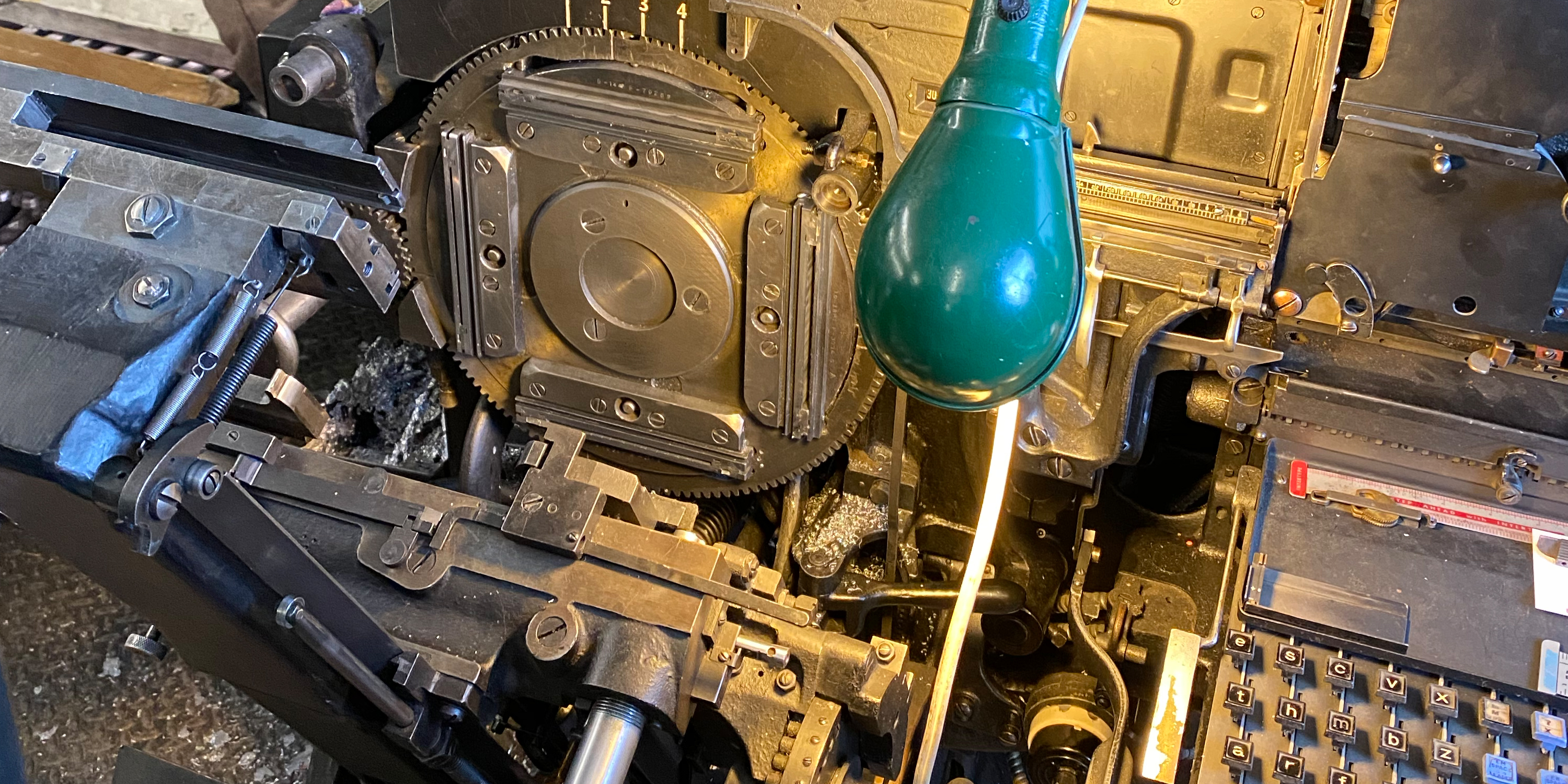
Over this past year, we’ve hired several new faces at Extensis who are new to the world of font management. Fortunately, we have an exceptional typography resource right here in Portland, Oregon. The CC Stern Type Foundry is tucked away in an unassuming industrial area in Northeast Portland. Within its walls, history comes alive.
It’s easy to forget that typefaces were once made by hand or machines, not with software. In order to fully appreciate typography — or any discipline for that matter — it’s important to gain an understanding of its origins and history. The CC Stern Type Foundry preserves the history of type technology and shares it with visitors.
This working museum is maintained by volunteers who want to preserve the art of type-making. The impressive collection includes working type machines, some dating back to the mid 1800s.
Director Jeff Shay and volunteers Brian and Rebecca gave us a special tour. They showed us how metal type was made over the past couple hundred years. We got to handle freshly cast type and saw original type machines in action!
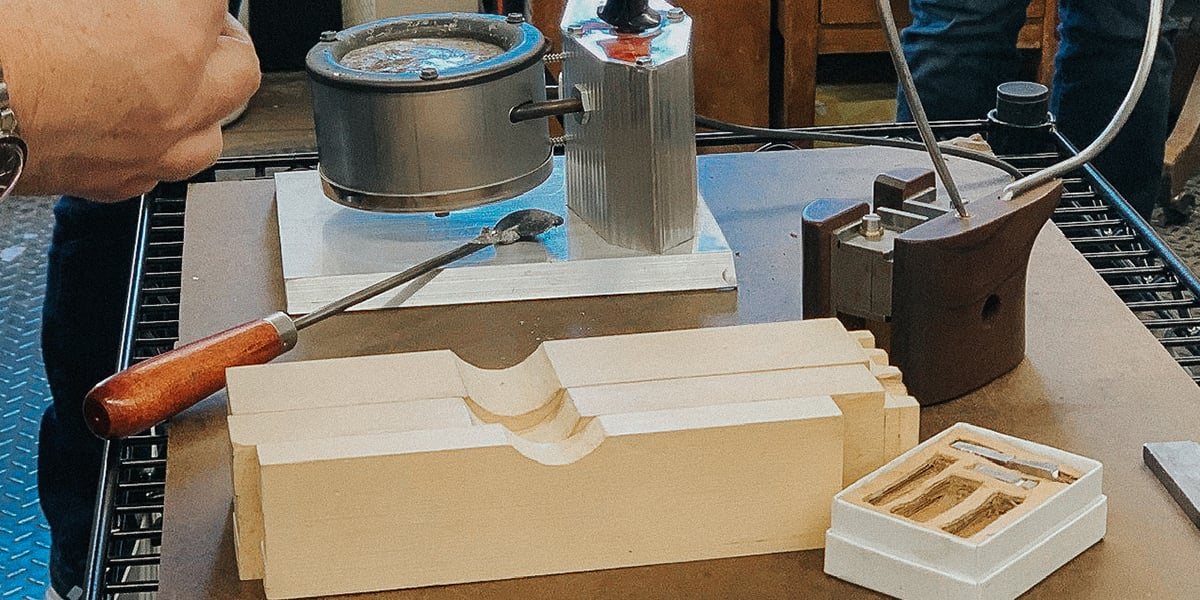
From the 1440s to the mid 1800s, hand casting was the main method for creating metal type. Typesetters would melt metal and pour it into molds, forming each individual piece of type.
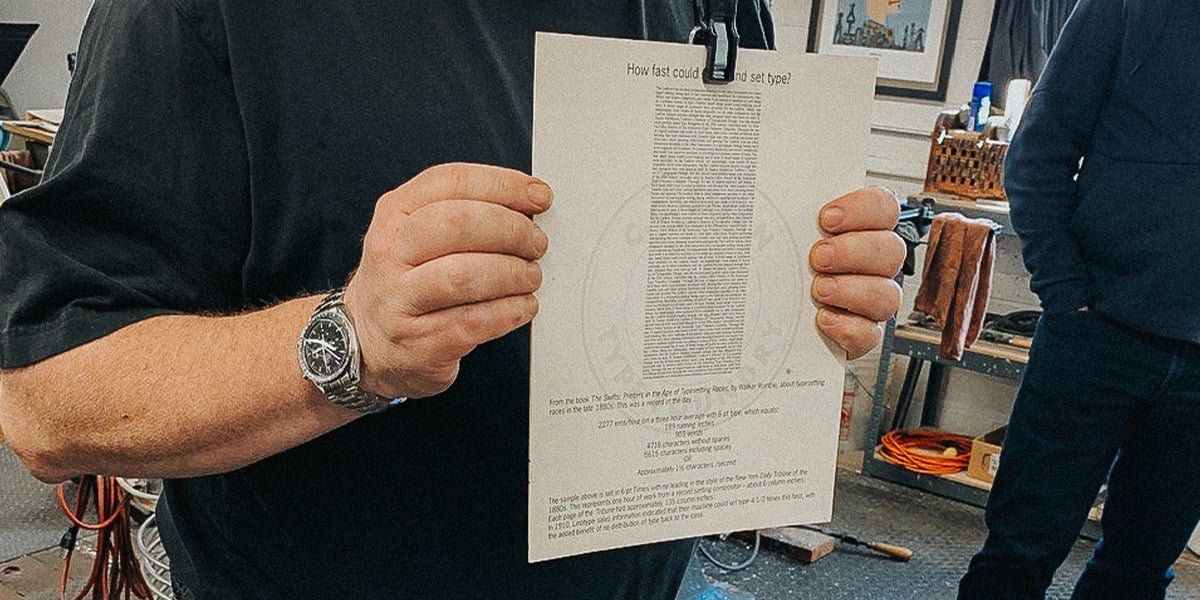
This picture shows the amount of typeset by the winner of a typesetting race in the late 1800s. This was the record for typeset in one hour.
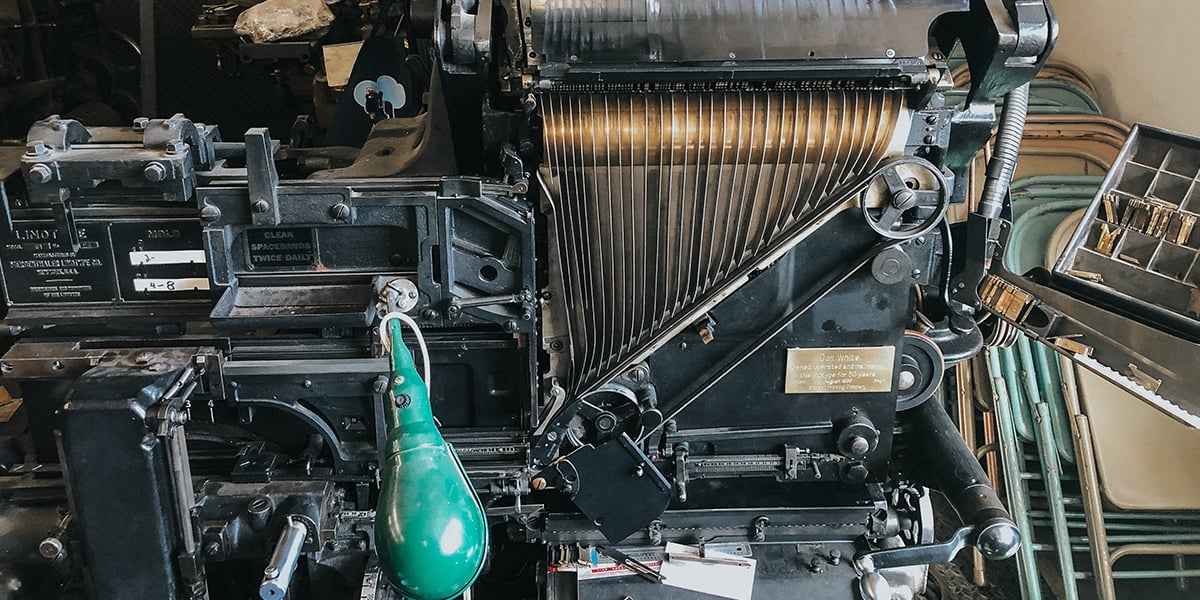
The Linotype changed the world of type in 1886. Several newspaper publishers pooled their resources to build the world’s first commercially successful automated typesetting machine, allowing them to deliver news at a much faster pace than ever before.
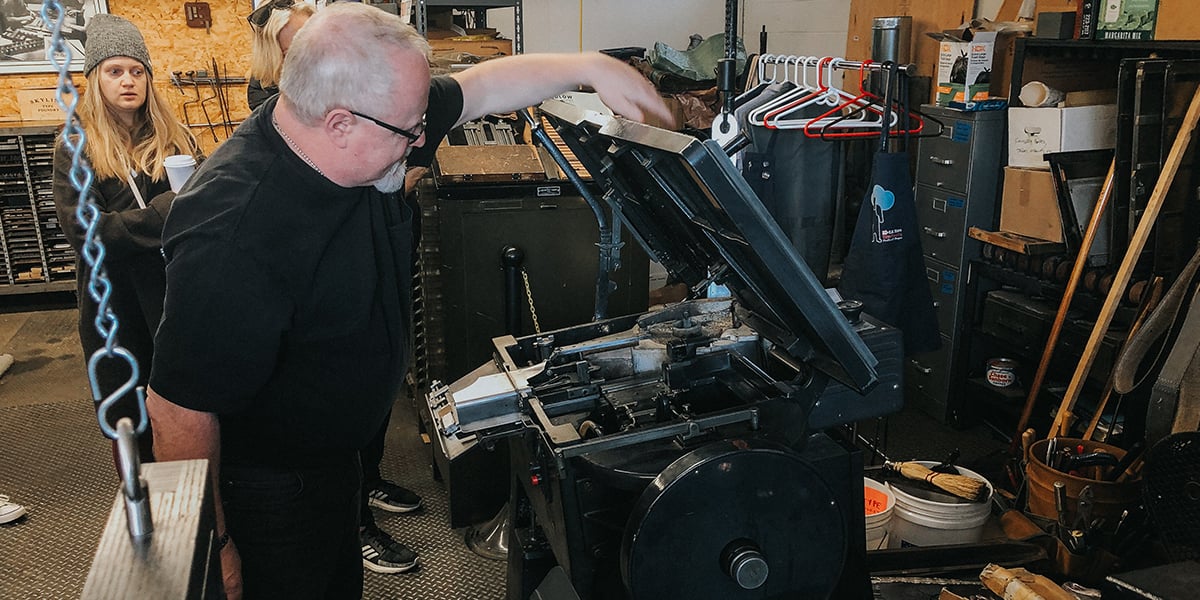
The Ludlow Typograph machine created type for newspaper headings — up to 240 point when large, eye-catching type was needed.
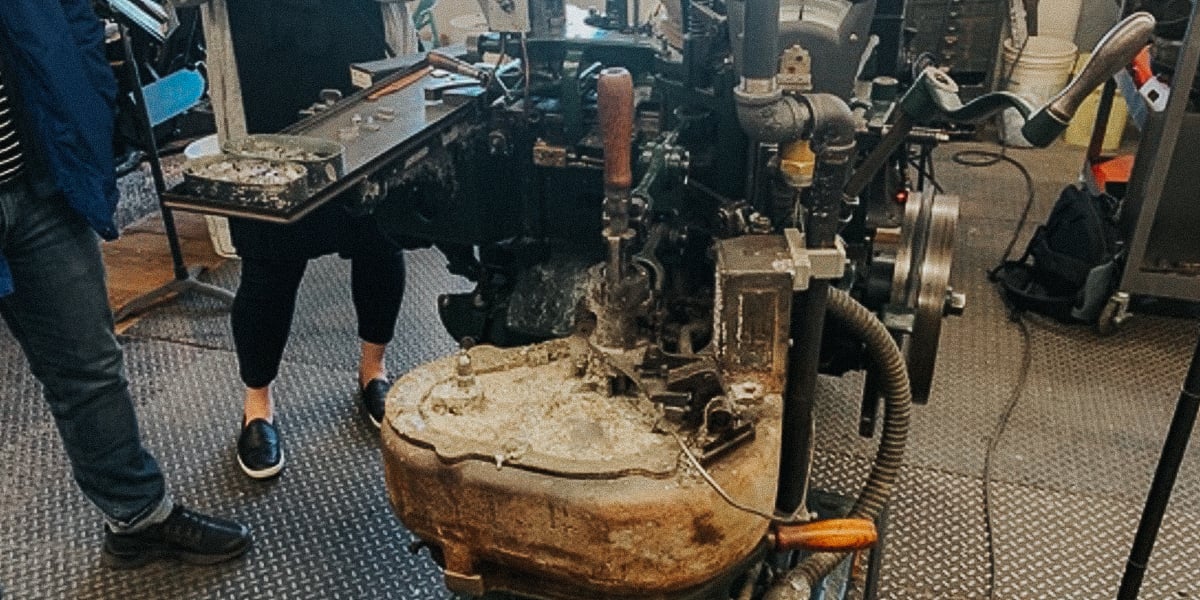
Careful, this machine squirts hot metal! The Monotype Composition Caster was primarily used to create type for book and tablature work.
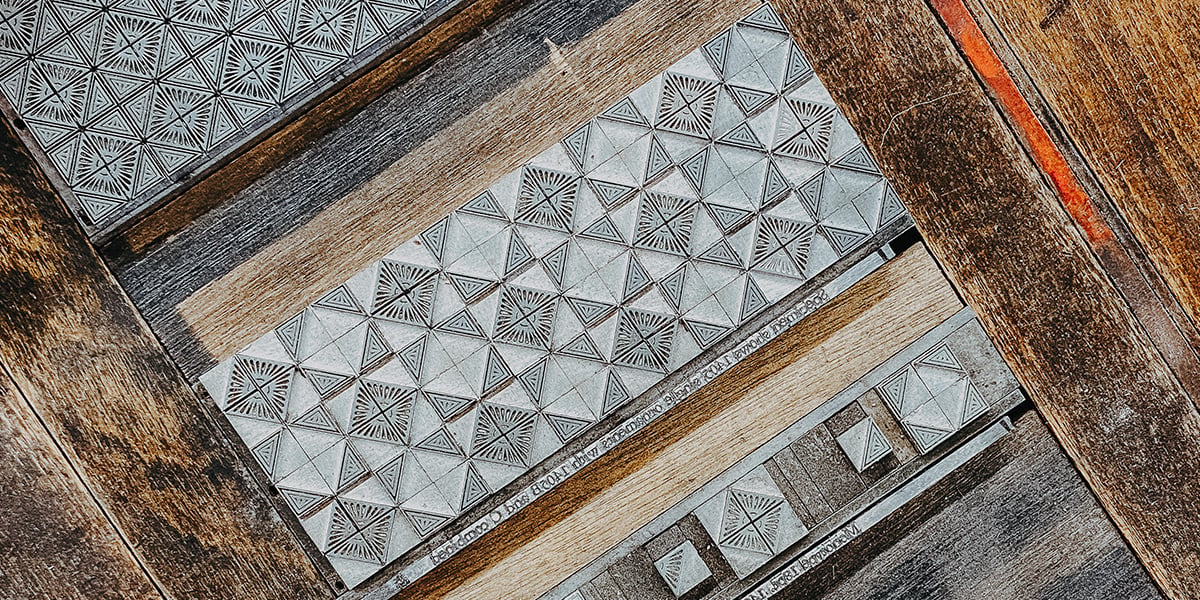
Example: tablature work
The CC Stern Type Foundry is open to the public, every third Saturday of the month. It’s actually great for adults and kids alike — one historically accurate typesetter’s desk could be a doppelganger for Olivander’s wand shop in Harry Potter! You can also support their initiative by purchasing their merchandise on BuyOlympia.